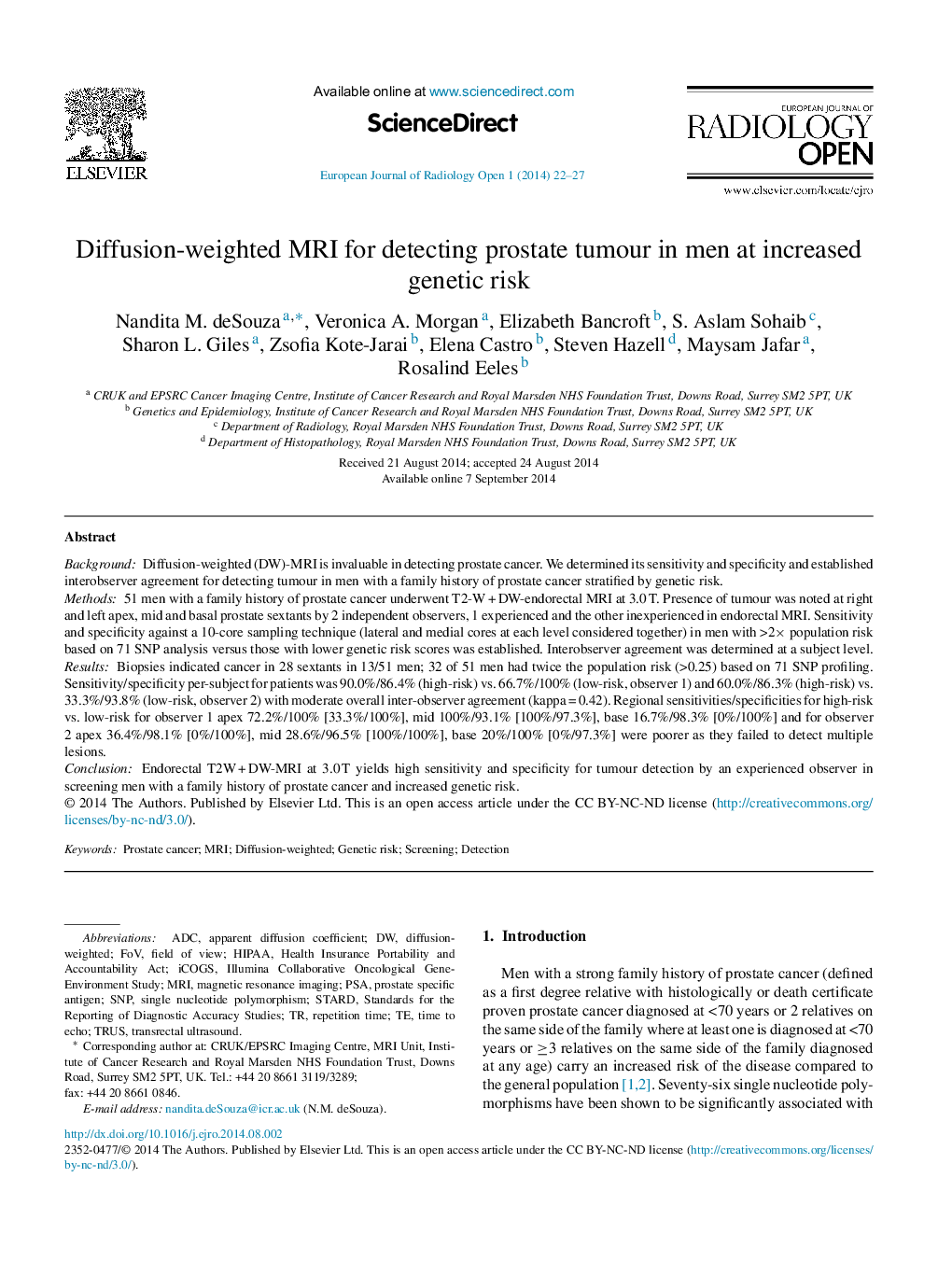| Article ID | Journal | Published Year | Pages | File Type |
|---|---|---|---|---|
| 4229688 | European Journal of Radiology Open | 2014 | 6 Pages |
•Endorectal T2W + DW-MRI is potentially useful for prostate cancer screening.•MRI is specific for detecting prostate cancer in men with increased genetic risk.•Detection of prostate cancer in men at genetically low risk with MRI is limited.
BackgroundDiffusion-weighted (DW)-MRI is invaluable in detecting prostate cancer. We determined its sensitivity and specificity and established interobserver agreement for detecting tumour in men with a family history of prostate cancer stratified by genetic risk.Methods51 men with a family history of prostate cancer underwent T2-W + DW-endorectal MRI at 3.0 T. Presence of tumour was noted at right and left apex, mid and basal prostate sextants by 2 independent observers, 1 experienced and the other inexperienced in endorectal MRI. Sensitivity and specificity against a 10-core sampling technique (lateral and medial cores at each level considered together) in men with >2× population risk based on 71 SNP analysis versus those with lower genetic risk scores was established. Interobserver agreement was determined at a subject level.ResultsBiopsies indicated cancer in 28 sextants in 13/51 men; 32 of 51 men had twice the population risk (>0.25) based on 71 SNP profiling. Sensitivity/specificity per-subject for patients was 90.0%/86.4% (high-risk) vs. 66.7%/100% (low-risk, observer 1) and 60.0%/86.3% (high-risk) vs. 33.3%/93.8% (low-risk, observer 2) with moderate overall inter-observer agreement (kappa = 0.42). Regional sensitivities/specificities for high-risk vs. low-risk for observer 1 apex 72.2%/100% [33.3%/100%], mid 100%/93.1% [100%/97.3%], base 16.7%/98.3% [0%/100%] and for observer 2 apex 36.4%/98.1% [0%/100%], mid 28.6%/96.5% [100%/100%], base 20%/100% [0%/97.3%] were poorer as they failed to detect multiple lesions.ConclusionEndorectal T2W + DW-MRI at 3.0 T yields high sensitivity and specificity for tumour detection by an experienced observer in screening men with a family history of prostate cancer and increased genetic risk.
